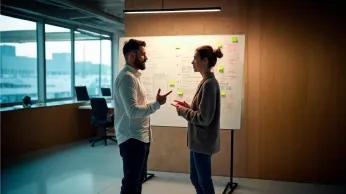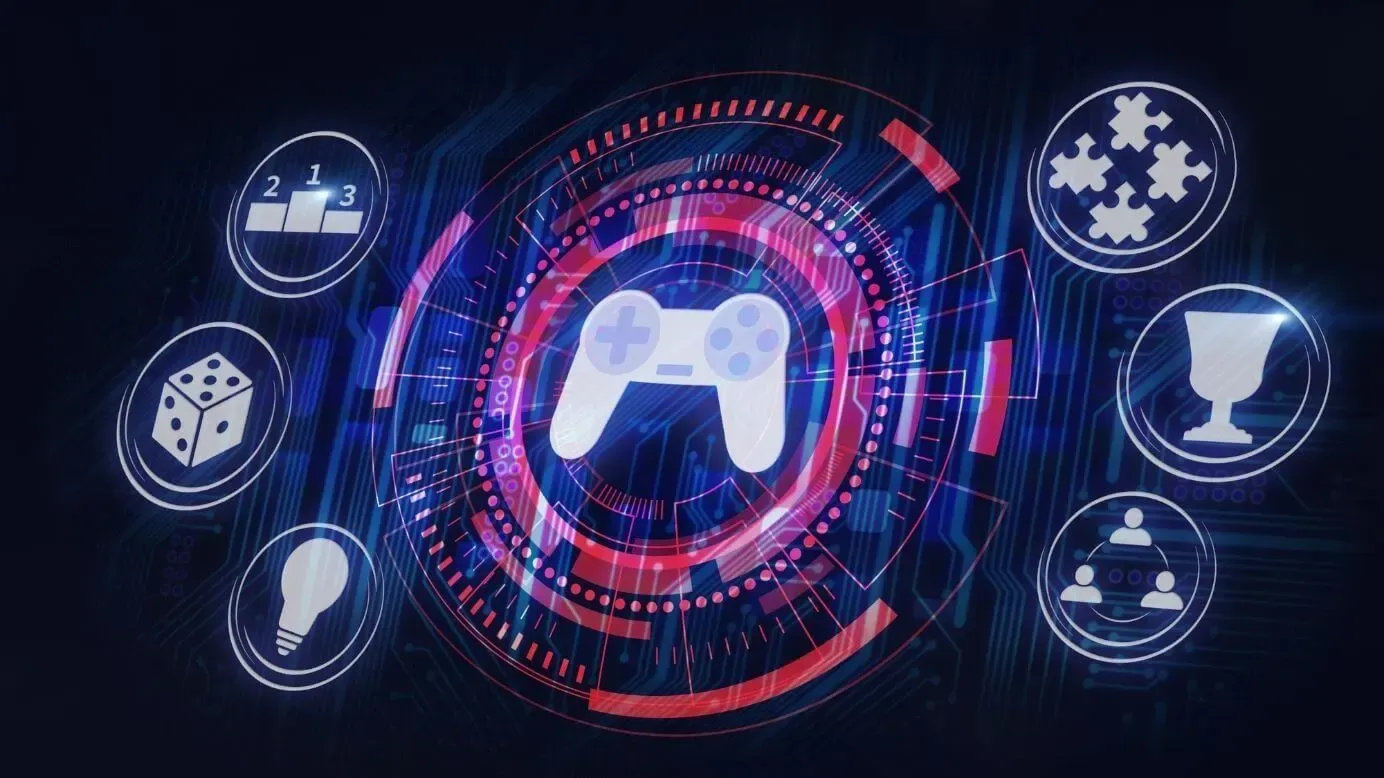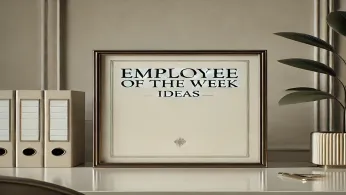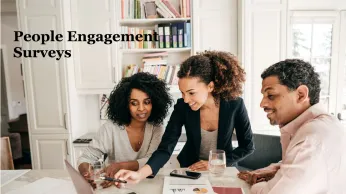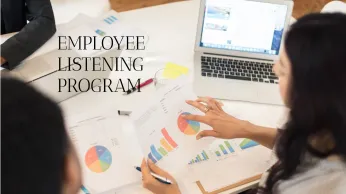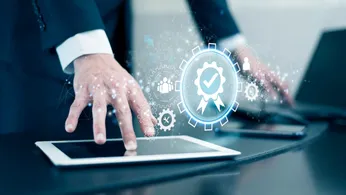How Gamification Boosts Employee Engagement and Performance
Learn how gamification for employee engagement drives motivation, improves performance, and fosters a culture of recognition, collaboration, and goal alignment.
Di halaman ini
Did you know that gamified workplace initiatives can increase employee engagement, driving higher productivity and a sense of belongingness? A Forbes article has revealed that 70% of business transformation initiatives fail due to a lack of employee engagement, urging employers to focus on implementing steps for employee engagement.
One of India's largest food ordering and delivery platforms uses gamification to solve the engagement of their colossal workforce of over 2 lakh delivery partners. They gamified their delivery partners' attendance, shift completion, and delivery times using Empuls, an excellent example of how gamification improves employee engagement.
Setiap kali mitra pengantaran mencapai tugas untuk menghadiri pengiriman selama satu hari, mengirim sesuai jadwal, dan menyelesaikan waktu shift mereka, mereka secara otomatis diberikan poin.
Poin-poin ini dapat diakumulasikan untuk membeli produk atau layanan yang mereka impikan - yang jika tidak, akan sulit dilakukan hanya dengan gaji mereka. Pada bulan keenam implementasi, organisasi ini memiliki 86% mitra yang terlibat dan mencapai target.
Considering their operational complexity of being spread across 280+ cities, over 270 of these being tier 2 and tier 3 cities, this achievement is laudable. This reach would have been impossible if not for gamification using scalable technology. The above case is just one of the numerous applications of gamification.
Such an implementation is corroborated by research from Harvard Business School that claims that framing competition as a gain can positively impact an employee’s feeling and their willingness to find creative ways to meet their goals.
Teknik ini banyak digunakan dalam pemasaran, inovasi, kesehatan, urun daya, pembelajaran, pembangunan komunitas, tujuan sosial, dan keterlibatan di tempat kerja. Di antaranya, artikel ini berfokus pada bagaimana gamifikasi secara khusus dapat mengubah keterlibatan di tempat kerja.
Apa yang dimaksud dengan gamifikasi?
Gamification involves integrating game-design elements such as points, badges, and leaderboards into non-gaming contexts to motivate and increase user engagement. In the workplace, this translates to applying these elements to tasks and processes to make them more engaging and rewarding.
1. Yu-kai Chou
Yu-kai Chou, a gamification author, and international keynote speaker tells us that gamification needs to be designed around the 'core drives' of human beings. He classifies these core drives into eight categories: a higher purpose, achievement, empowerment, ownership, social influences, scarcity, unpredictability, and avoidance.
He believes that the most enchanting of gamification designs necessarily address at least one or many of the above 'core drives'.
2. Gabe Zichermann
Gabe Zicchermann, a gamification expert and public speaker, presents an interesting narrative on the biochemistry of gamification. "Any time you challenge yourselves to do a task, it doesn't matter how big or small - and you succeed - your brain secretes a magical little bit of dopamine - which makes you feel really good.
The more you do this 'challenge - achievement - pleasure' loop, the more dopamine is secreted in your brain making you want to do it more. Thus the more you succeed, the more you want to succeed."
Which elements are essential in gamification for employee engagement?
Rajat Paharia, in his book Loyalty 3.0, describes that gamification has a few or many of the following ten elements (also known as game mechanics) to it:
- Immediate feedback: The user knows whether he is winning or losing almost immediately after his actions.
- Leaderboards: The user gets to know where he is positioned from amongst the rest of the users.
- Goals: The user gets to know where they are headed and what they need to achieve.
- Badges: The user receives badges that are shorthand for past achievements.
- Leveling up: The user is taken through ascending levels of difficulty.
- Onboarding: The user is trained well - all during the course of the gameplay itself.
- Competition: The user is competing with other players or groups.
- Collaboration: The user gets to help and take help from other users.
- Community: The user gets to belong to a community of others who have similar gaming interests.
- Points: The user accumulates points throughout the gameplay.
That said, ticking off the elements of gamification does not ensure a valid gamified solution. The author of 'Gamify,' Brian Burke warns us of how a few companies have a misconception that gamification is a magic elixir that can be used to indoctrinate masses to perform the company's bidding. Users can quickly sense poorly designed solutions and start actively avoiding them, leading them to collapse.
When should organizations implement gamification?
Organizations should consider implementing gamification when they observe low employee engagement, high turnover rates, or a lack of motivation. It's particularly effective during onboarding, training, and performance management phases.
Gamified onboarding can enhance the new employee experience by making the process more interactive and informative. Similarly, incorporating gamification into training programs can improve knowledge retention and skill development.
Merancang gamifikasi untuk keterlibatan karyawan
Brian Burke in his books and Yu-kai Chou continually emphasizes how a gamification design needs to incorporate 'core drives' or intrinsic motivations of the user. This means the game architect needs to go beyond game mechanics and study the true motivations of the target users. Along with the business scope, the user's scope in the solution needs to be constantly evaluated.
Brian Burkes mendapatkan tujuh langkah berikut yang harus menjadi kerangka kerja selama desain gamifikasi - baik untuk arsitek maupun pemimpin bisnis:
1. Mendefinisikan hasil bisnis dan metrik keberhasilan
Semua upaya yang dilakukan dalam gamifikasi sebuah solusi perlu dikaitkan dengan tujuan bisnis. Dengan demikian, langkah pertama saat memutuskan solusi bisnis yang ter-gamifikasi adalah menentukan tujuan bisnis yang ingin diselesaikan.
'20% faster customer first response time' could be an ideal business outcome definition that includes a success metric of '20% improvement' for a typical customer service team.
2. Menentukan target audiens
Siapa yang akan menjadi pengguna solusi gamifikasi? Seperti apa profil ideal mereka? Apa yang mendorong mereka? Ini adalah pertanyaan-pertanyaan penting untuk memahami target audiens secara mendalam. Semakin banyak pemahaman ini, semakin banyak gamifikasi yang akan mengatasi dorongan inti mereka.
Referring back to the customer service team, the target audience for gamification will typically be customer service executives. Their job designs are fairly standardized, iterative, and homogeneous. Core drives like 'higher purpose' and 'achievement,' can break this monotony and introduce higher efficiencies if captured in gamification.
3. Menentukan sasaran pemain
Sasaran pemain harus merupakan bagian dari sasaran bisnis dan idealnya harus sesuai dengan setidaknya salah satu dorongan utama pengguna.
Burke talks of an example of how a children's cancer treatment center gamified pain reporting by their patients. The kids are made a part of a "Pain Squad" where they pretend to be a police officer. They are then promoted from rookie to sergeant to chief as they regularly report their pain levels.
Drawing a quick inspiration, the customer service executives in our above example could be given a similar goal - to 'put out' or 'solve' a query as quickly as possible.
4. Menentukan model keterlibatan pemain
Bagaimana pengguna akan terlibat dalam solusi gamifikasi? Apakah lebih masuk akal untuk menjadikannya permainan kolaboratif atau kompetitif? Berapa lama permainan ini akan berlangsung? Apa bentuk hadiah yang akan diberikan? Ini adalah pertanyaan-pertanyaan penting yang harus dijawab sebelum tahap desain.
In our example, a 'competitive' engagement model makes direct sense because the executives address customer queries individually. There are ways companies have effectively made customer service gamification collaborative under the assumption of it being impossible for a customer service executive to know ALL the answers to all possible client questions. They create teams of customer executives with mixed specializations and allow them to tackle queries together.
5. Menentukan ruang bermain dan merencanakan perjalanan
The environment the gamification is as important as the solution itself. In the context of employee solutions, it is ideal if the 'play space' is close to their CRMs and ERPs. The entire journey of the user's needs to be mapped, level by level, and challenge by challenge.
Customer Service brigadiers could be given faster-level achievements while they solve customer queries faster. There could be leaderboards showing the position of each of the brigadier's achievements and profile badges representing their positions. It is ideal if leaderboards could be reset after a final win - to democratize the opportunity to win and retry. The history of achievements should be recorded both on the profile of the user as well as a 'hall of fame'.
6. Mendefinisikan ekonomi permainan
Apa yang diterima pengguna sebagai imbalan atas pencapaian mereka? Bagaimana hal ini dapat ditransaksikan lebih lanjut? Bagaimana catatan transaksi ini diarsipkan? Ekonomi game adalah mesin agar semua desain ini dapat berfungsi dan menjawab pertanyaan-pertanyaan penting di atas membantu menentukan desain game.
Since customer service is almost always a direct component of a customer service executive's KRA, better efficiencies could be incentivized using their standard performance rewarding guidelines. Points could be used to track the progress and major milestone wins can be awarded using incentive disbursals.
7. Mainkan, uji, dan ulangi
Seperti halnya desain sistem lainnya, gamifikasi juga perlu membuka lingkaran umpan balik dan memahami apa yang perlu diubah untuk membuat pengalaman pengguna menjadi mulus. Tingkatkan desain secara konsisten dan coba dan uji coba mekanisme permainan baru yang dapat bekerja menuju adopsi solusi yang lebih baik.
Talk to the customer service executives one-on-one and understand the challenges they face in the gameplay. Get their feedback on each of the game design aspects. Reinvent parts of it if necessary- say, make it a collaborative gameplay from a competitive one?
Dampak gamifikasi terhadap keterlibatan karyawan
Ketika menerapkan gamifikasi, penting untuk memahami bagaimana gamifikasi dapat berdampak pada setiap faktor penentu utama keterlibatan karyawan yang tercantum di bawah ini - karena keterlibatan karyawan itu sendiri merupakan perpaduan yang kompleks dari berbagai fenomena pekerjaan.
Karakteristik individu karyawan dipandang sebagai prediktor terkuat dari keterlibatan karyawan dan secara khusus, karakteristik di bawah ini adalah yang paling penting di antara yang lainnya:
1. Efisiensi diri
This accounts for the individual's perception of how effective his/her skills will be for the organization and the perception of self-efficacy can be nurtured using gamification that incorporates 'pats on the back'. Employee engagement software like Empuls uses 'spot rewards' and 'badges' for this purpose and these have seen enormous results in both reward ROI and engagement.
2. Ketahanan
Hal ini menjelaskan kemampuan karyawan untuk beradaptasi dengan cepat terhadap lingkungan bisnis dan budaya organisasi dan adaptasi ini dapat dilakukan dengan lebih lancar dan cepat dengan melakukan gamifikasi pada proses orientasi dan pelatihan. Mekanisme permainan dari ekosistem 'kolaboratif' dapat membantu karyawan baru beradaptasi dengan cepat.
3. Kapasitas pribadi
Atribut pribadi yang positif seperti harapan dan optimisme menentukan bagaimana karyawan terlibat dengan organisasi. Mekanisme permainan seperti 'Onboarding' dapat digunakan untuk memperkuat OKR dan peran pekerjaan - sehingga dapat menetapkan ekspektasi peran dengan sangat jelas.
4. Faktor-faktor terkait desain pekerjaan
Desain pekerjaan adalah elemen terpenting kedua untuk keterlibatan karyawan dan berikut ini adalah beberapa karakteristik yang ada di dalamnya:
5. Umpan balik
Giving and receiving feedback is the most significant of all job design features and gamification can very efficiently help nurture a feedback-positive environment. Employee engagement tool and employee gamification software like Empuls use 'immediate feedback' game mechanics like 'high-fives' and '+1s' to get anonymous feedback from the other users.
Survei yang di-gamifikasi (mengisi survei akan memberikan poin kepada pengguna), umpan balik, jajak pendapat adalah cara yang terbukti untuk meningkatkan respons dan partisipasi. Bahkan frekuensi dan waktu respons untuk mengisi umpan balik dapat dilacak dan di-gamifikasi.
6. Pemberdayaan & otonomi
Gamifikasi dapat memberikan solusi yang efisien untuk memupuk pemberdayaan dan otonomi untuk menciptakan keterlibatan. Gamifikasi interaksi kelompok kerja dan memberikan poin untuk mengambil keputusan secara mandiri dapat menjadi cara untuk menerapkannya. Poin untuk ide-ide baru, penemuan masalah, umpan balik, saran inovatif, dan sebagainya dapat memicu lebih banyak otonomi kerja.
7. Peluang untuk pengembangan
Mekanisme permainan 'Naik level', 'Lencana' dan 'Papan Peringkat' merupakan metode yang efisien untuk menciptakan pengembangan berkelanjutan di antara para karyawan. Bahkan untuk papan peringkat yang diatur ulang, level dan lencana akan menunjukkan apa yang telah dicapai oleh karyawan di masa lalu. Menghubungkannya dengan proses penilaian dan perencanaan kepemimpinan akan semakin meningkatkan potensinya.
8. Persepsi terhadap kepemimpinan dan manajemen atasan langsung
Bahkan para supervisor dapat menjadi 'target audiens' untuk gamifikasi. Merancang gamifikasi yang melacak waktu yang dibutuhkan manajer untuk menyelesaikan masalah karyawan, meninjau tugas, frekuensi interaksi tim, kepatuhan manajer terhadap induksi karyawan dan kebijakan kesejahteraan organisasi, dll. Mekanisme permainan 'Kompetisi' dan 'Papan Peringkat' dapat digunakan untuk mengimplementasikan hal ini di antara para manajer yang berada dalam kelompok yang sama.
9. Persepsi tentang faktor organisasi dan tim
Iklim psiko-sosial, komunikasi, kepercayaan, dan sebagainya yang ada di dalam organisasi adalah penentu lain dari keterlibatan karyawan. Nilai-nilai inti membentuk dasar budaya dan iklim perusahaan. Gamifikasi dapat memupuk nilai-nilai ini melalui penggunaan mekanisme permainan seperti 'Lencana Berbasis Nilai'.
Gamifikasi tingkat manajer dapat dibuat untuk melacak seberapa baik dia berkomunikasi dan menyebarkan tujuan organisasi jangka panjang dan jangka pendek kepada timnya.
10. Intervensi atau kegiatan organisasi
Gamifikasi digunakan secara luas untuk kegiatan kesejahteraan karyawan dan telah menemukan hasil yang luar biasa dalam meningkatkan kebugaran dan efisiensi karyawan secara keseluruhan. Jarak tempuh lari, jalan kaki, dan olahraga dapat dilacak dan papan peringkat 'langsung' dapat dipertahankan.
People Combine, salah satu klien kami, menggunakan gamifikasi untuk mengukur pencapaian olahraga dan mengurangi ketidakhadiran karyawan karena alasan kesehatan hingga 50%. Mereka menggunakan mekanisme permainan seperti 'papan peringkat', 'naik level', 'lencana', 'tujuan', dan 'poin'.
How Empuls, the employee gamification software could help?
Gamify employee rewards & recognition with badges, points, certificates, and leaderboards. Motivate employees and improve performance with a healthy competitive spirit using game mechanics.
Empuls empowers organizations to build a culture of appreciation and high performance by integrating gamification into everyday work experiences. Here's how it supports engagement:
1. Motivates with meaningful recognition
Empuls allows peers and managers to give timely and public recognition through points, badges, and social appreciation. This reinforces positive behaviors and aligns employees with company values.
2. Boosts performance through friendly competition
With gamified elements like leaderboards, challenges, and goals, Empuls fosters a healthy sense of competition. It encourages employees to give their best effort consistently and track their progress in real time.
3. Drives continuous engagement
The platform combines gamification with regular pulse surveys and feedback loops, helping leaders stay in tune with employee sentiment and take action to improve engagement levels.
4. Creates a reward-driven culture
Empuls connects performance and recognition with a powerful rewards engine, enabling employees to redeem points for a wide variety of digital gift cards and experiences — adding tangible value to their achievements.
5. Promotes team collaboration and participation
By gamifying collaboration, knowledge sharing, and participation in company initiatives, Empuls helps break silos and improve cross-functional engagement.
6. Enhances platform adoption
Gamified nudges and milestones encourage employees to use internal tools and communication platforms more actively, improving digital workplace adoption.
7. Personalized engagement journeys
With role-based challenges and milestone tracking, Empuls helps personalize each employee's journey based on their department, goals, and performance trends.
Schedule a call now to get a personalized demo!
Kesimpulan
Gamifikasi bahkan dapat memecahkan masalah yang tadinya dianggap tidak dapat dipecahkan - seperti ketika sekelompok pemain Foldit memecahkan masalah biokimia hanya dalam waktu sepuluh hari, yang tetap tidak terpecahkan selama 15 tahun. Hal ini menunjukkan potensi gamifikasi yang imersif. Kami baru saja menyentuh permukaan tentang bagaimana gamifikasi dapat digunakan untuk meningkatkan keterlibatan.
Dengan lingkungan kerja yang semakin terdigitalisasi - ada ruang untuk melakukan gamifikasi di hampir semua aspek pekerjaan. Karena keterlibatan karyawan mencakup semua aspek pekerjaan ini, gamifikasi akan membantu organisasi menciptakan lingkungan kerja yang sangat efisien dan menarik.


